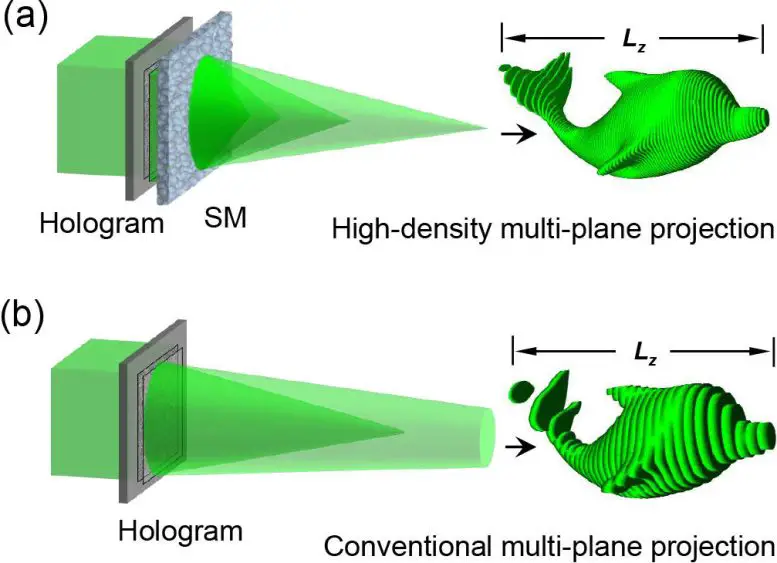Holograms are things that most people connect with entertainment. But ultra-realistic holograms can use to jam even human eyes on the battlefield. The hologram can jam the new types of missiles IID (Imaging Infrared) or image recognition-based homing systems.
The aircraft can also use holograms to aim the AA flak in the wrong position. The infrared hologram can also cheat things like IR-seekers. This type of use can make the military give funds for the research of that kind of system.
The thing is that holograms can use in architecture to see what some solutions look like. That thing is one of the reasons why architects and engineers are interested in this kind of technology. When some developers are making something by using the CAD-programs, they can use holographic projectors to make sure, that the thing that the object they created fits the place.
"Researchers have developed a new way to achieve dynamic projection of 3D objects onto ultrahigh-density successive planes. By packing more details into a 3D image, this approach could enable realistic representations for use in virtual reality and other applications. Credit: Lei Gong, University of Science and Technology of China." (ScitechDaily.com/Overcoming Two Long-Standing Bottlenecks: New Advance Paves Way to More Realistic 3D Holograms)
"The new 3D scattering-assisted dynamic holography approach creates a digital hologram by projecting high-resolution images onto planes spaced closely together (a), achieving a more realistic representation than conventional holography techniques (b). Credit: Lei Gong, University of Science and Technology of China"(ScitechDaily.com/Overcoming Two Long-Standing Bottlenecks: New Advance Paves Way to More Realistic 3D Holograms)
The use of holographs is important in nanotechnology. The creators of those systems can use interactive holograms and data gloves for moving single structures in their entirety. Creating an interactive hologram system is not as difficult as people think. The system only must use the precisely pointed to the certain point. The system must define the precise point of the hand.
And then move the virtual object. In the case of nanotechnology, the object can have the same parameters as its pair in the real world. Then the system simulates the energy transfer and other things and makes the hologram act like a real thing and if the operation is accepted the system can move the real structure in the reaction chamber.
The hologram can use to adjust energy levels in the reaction chambers very accurately. And that allows researchers to make more complicated nanostructures.
Holograms can make the power fields possible.
The most futuristic way to use a hologram is to use a high-energy hologram as the protective field. The high-energy hologram melts incoming ammunition. And then the pressure impulse will break that ammunition's structure.
Then the pressure throws the droplets of ammunition away. The high-energy hologram can also create a plasma shield. If the fast-rotating plasma impacts the ammunition it breaks its structure or even vaporizes it. That thing means that holograms can be the new ground-breaking actor in many areas.
https://scitechdaily.com/overcoming-two-long-standing-bottlenecks-new-advance-paves-way-to-more-realistic-3d-holograms/






No comments:
Post a Comment
Note: Only a member of this blog may post a comment.